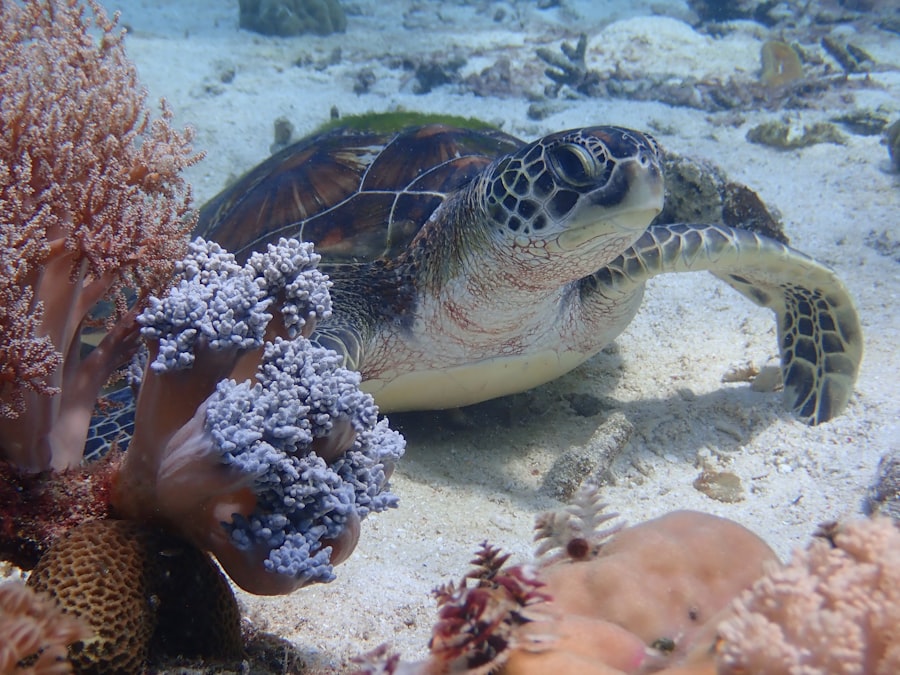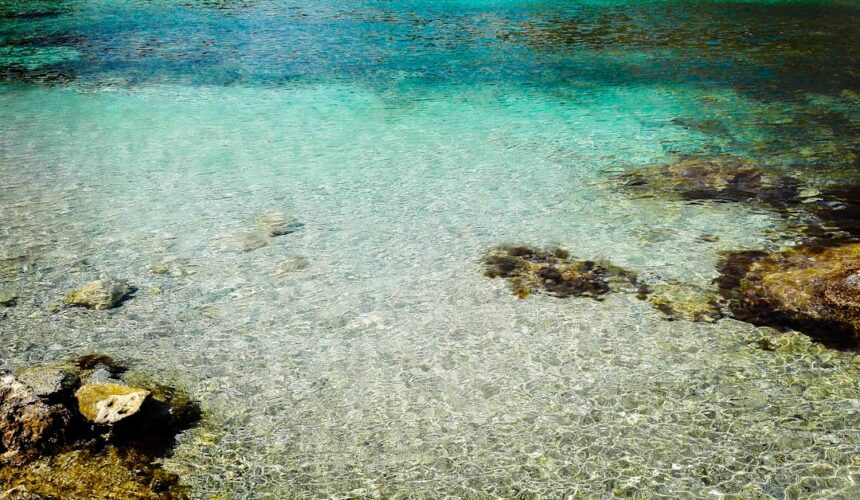The seabed, often overlooked in discussions about marine ecosystems, plays a crucial role in the health of the planet. It serves as a foundation for diverse marine life, providing habitat for countless species ranging from microscopic organisms to large marine mammals. The seabed is not merely a physical substrate; it is a dynamic environment that supports complex biological processes.
Nutrient cycling, carbon storage, and the maintenance of biodiversity are all functions that hinge on the health of the seabed. As such, understanding its importance is vital for both ecological balance and human livelihoods. Moreover, the seabed is a treasure trove of resources that have significant economic implications.
It is home to vast reserves of minerals, hydrocarbons, and other valuable materials that are essential for modern industries. The extraction of these resources has become increasingly important as terrestrial sources dwindle. However, this economic potential must be balanced with the need for sustainable practices to ensure that the seabed’s ecological integrity is not compromised.
The importance of the seabed extends beyond its immediate utility; it is a critical component of global environmental health and economic stability.
Key Takeaways
- The seabed is of great importance for various ecological, economic, and scientific reasons.
- There is an ongoing battle for resources such as minerals and energy sources, leading to potential conflicts and disputes.
- Environmental concerns and conservation efforts are crucial in protecting the delicate balance of the seabed ecosystem.
- Climate change is having a significant impact on the seabed, leading to changes in ocean temperatures and acidity levels.
- International law and governance play a crucial role in regulating and managing activities related to the seabed, ensuring fair and sustainable use.
The Ongoing Battle for Resources
The race for seabed resources has intensified in recent years, leading to a complex web of geopolitical tensions and economic interests. Nations around the world are vying for control over these underwater riches, which include precious metals, oil, and gas reserves. This competition often leads to conflicts over territorial claims and resource rights, particularly in areas like the South China Sea and the Arctic.
As countries seek to assert their dominance, the potential for disputes escalates, raising concerns about international stability and security. In addition to national interests, private corporations are also heavily invested in seabed resource extraction. The rise of deep-sea mining companies has introduced new dynamics into the battle for resources.
These entities often operate in international waters, where regulations can be murky and enforcement weak. The allure of profit can lead to reckless exploitation, with little regard for environmental consequences. As the demand for resources continues to grow, the ongoing battle for control over the seabed becomes increasingly fraught with ethical dilemmas and environmental risks.
Environmental Concerns and Conservation Efforts

The environmental implications of seabed exploitation are profound and far-reaching. Activities such as deep-sea mining and oil drilling can lead to habitat destruction, pollution, and biodiversity loss. The delicate ecosystems that thrive on the seabed are particularly vulnerable to disturbances caused by human activity.
For instance, sediment plumes generated by mining operations can smother marine life and disrupt food chains. As awareness of these issues grows, conservation efforts are becoming more prominent in discussions about seabed management. Various organizations and governments are working to establish protected areas on the seabed to safeguard critical habitats from exploitation.
Initiatives such as marine protected areas (MPAs) aim to preserve biodiversity and promote sustainable use of marine resources. However, implementing effective conservation measures is fraught with challenges, including enforcement difficulties and conflicting interests among stakeholders. The need for comprehensive strategies that balance resource extraction with environmental protection is more pressing than ever as the impacts of human activity on the seabed become increasingly evident.
The Impact of Climate Change on the Seabed
| Metrics | Data |
|---|---|
| Sea Surface Temperature | Increasing due to climate change |
| Ocean Acidification | Rising, impacting marine life |
| Sea Level Rise | Causing coastal erosion and habitat loss |
| Coral Bleaching | Resulting in loss of biodiversity |
| Impact on Marine Ecosystems | Disrupting food chains and habitats |
Climate change poses a significant threat to the health of the seabed and its ecosystems. Rising ocean temperatures, acidification, and sea-level rise are altering the conditions under which marine life thrives. Coral reefs, which rely on stable temperatures and clear waters, are particularly at risk as they face bleaching events and increased mortality rates.
These changes not only affect biodiversity but also disrupt the livelihoods of communities that depend on healthy marine ecosystems. Furthermore, climate change can exacerbate the challenges associated with seabed resource extraction. As ice melts in polar regions, previously inaccessible areas become open for exploration and exploitation.
This not only raises concerns about environmental degradation but also increases geopolitical tensions as nations scramble to stake their claims in newly accessible territories. The intersection of climate change and seabed management highlights the urgent need for adaptive strategies that consider both environmental sustainability and economic viability.
The Role of International Law and Governance
International law plays a pivotal role in governing activities related to the seabed. The United Nations Convention on the Law of the Sea (UNCLOS) establishes guidelines for maritime boundaries, resource rights, and environmental protection. However, enforcement remains a significant challenge, particularly in international waters where jurisdiction is ambiguous.
Disputes over territorial claims can lead to conflicts that undermine cooperative governance efforts. In recent years, there has been a push for stronger international frameworks to regulate seabed activities more effectively. Initiatives aimed at enhancing transparency and accountability in resource extraction are gaining traction among nations and non-governmental organizations alike.
Collaborative efforts to develop binding agreements on environmental standards and resource management are essential for ensuring that seabed exploitation occurs within sustainable limits. The role of international law in this context cannot be overstated; it serves as a foundation for cooperation among nations striving to balance economic interests with environmental stewardship.
Technological Advancements in Seabed Exploration

Technological advancements have revolutionized seabed exploration, enabling deeper and more efficient access to underwater resources. Innovations such as remotely operated vehicles (ROVs), autonomous underwater vehicles (AUVs), and advanced sonar systems have transformed how scientists and industries study and exploit the seabed. These technologies allow for detailed mapping of underwater landscapes and monitoring of marine ecosystems, providing valuable data that can inform sustainable practices.
However, while technology offers new opportunities for exploration, it also raises ethical questions about the extent of human intervention in fragile marine environments. The ability to access previously unreachable depths comes with responsibilities that must be carefully considered. As industries push the boundaries of exploration capabilities, there is an urgent need for regulations that ensure technological advancements do not come at the expense of ecological integrity.
The Role of Deep-Sea Mining
Deep-sea mining has emerged as a contentious issue within the broader context of seabed resource extraction. Proponents argue that it offers a solution to resource scarcity by tapping into vast reserves of minerals such as polymetallic nodules and rare earth elements found on the ocean floor. These materials are essential for various industries, including electronics and renewable energy technologies.
However, the potential benefits must be weighed against significant environmental risks associated with deep-sea mining operations. The ecological impacts of deep-sea mining are still not fully understood, leading many scientists and conservationists to advocate for caution. Disturbances caused by mining activities can have cascading effects on marine ecosystems, potentially leading to irreversible damage.
Indigenous Rights and the Seabed
Indigenous communities around the world have deep cultural ties to marine environments, including the seabed. Their traditional knowledge and practices often reflect a profound understanding of these ecosystems’ intricacies. However, as resource extraction activities expand into these areas, indigenous rights are frequently overlooked or marginalized in decision-making processes.
This raises ethical concerns about equity and justice in seabed management. Recognizing indigenous rights is essential for fostering inclusive governance frameworks that respect traditional knowledge while promoting sustainable practices. Collaborative approaches that involve indigenous communities in decision-making can lead to more effective conservation strategies and resource management plans.
By integrating indigenous perspectives into seabed governance, stakeholders can work towards solutions that honor cultural heritage while addressing contemporary challenges related to resource exploitation.
The Future of Seabed Management
The future of seabed management hinges on finding a balance between resource extraction and environmental conservation.
This may involve developing new technologies that minimize ecological impacts or implementing stricter regulations on resource extraction activities.
Additionally, fostering collaboration among governments, industries, scientists, and indigenous communities will be crucial in shaping effective management strategies. By working together towards common goals, stakeholders can create frameworks that promote responsible stewardship of seabed resources while safeguarding marine ecosystems for future generations.
The Need for Collaboration and Cooperation
Collaboration among various stakeholders is essential for addressing the complex challenges associated with seabed management. Governments must work together across borders to establish coherent policies that regulate resource extraction while protecting marine environments. Industries should engage with scientists and conservationists to develop best practices that minimize ecological impacts during exploration and extraction processes.
Furthermore, involving local communities—especially indigenous populations—in decision-making processes can lead to more equitable outcomes that respect cultural heritage while promoting sustainability. Collaborative efforts can foster a sense of shared responsibility among all stakeholders involved in seabed management, ultimately leading to more effective solutions that benefit both people and the planet.
The Silent Struggle: Unseen Consequences of Seabed Exploitation
The consequences of seabed exploitation often remain hidden from public view yet have profound implications for marine ecosystems and human communities alike. Habitat destruction caused by mining activities can lead to declines in fish populations, affecting food security for coastal communities reliant on fishing as a primary source of sustenance. Additionally, pollution from resource extraction can contaminate water sources and disrupt delicate ecological balances.
As awareness grows about these unseen consequences, there is an urgent need for greater transparency in seabed management practices. Stakeholders must prioritize monitoring and assessment efforts to understand better how exploitation impacts marine environments over time. By shedding light on these silent struggles, society can work towards more responsible approaches that prioritize ecological health alongside economic interests in seabed management.
In the ongoing discourse surrounding maritime territorial claims, the article “The Quiet Battle for the Seabed” sheds light on the often-overlooked geopolitical tensions beneath the ocean’s surface. A related piece that delves deeper into the strategic implications of these underwater confrontations can be found on the same platform. This article, available at In The War Room, explores the intricate dynamics of international maritime law and the technological advancements that are reshaping the future of seabed exploration and exploitation. Together, these articles provide a comprehensive understanding of the silent yet significant struggles occurring beneath the waves.
WATCH THIS! The FSB’s Hidden War on Europe’s Pipelines
FAQs
What is the quiet battle for the seabed?
The quiet battle for the seabed refers to the competition among countries and companies to secure rights to explore and exploit the resources found in the seabed, such as minerals, oil, and gas.
What are the resources found in the seabed?
The seabed contains a variety of resources including minerals such as manganese, cobalt, and nickel, as well as oil and gas deposits.
Who is involved in the battle for the seabed?
Countries with coastlines and companies involved in deep-sea mining are the primary players in the battle for the seabed. These include both developed and developing nations, as well as private corporations.
What are the potential environmental impacts of seabed mining?
Seabed mining has the potential to cause significant environmental damage, including habitat destruction, disruption of marine ecosystems, and the release of toxic substances into the water.
What regulations govern seabed mining?
The International Seabed Authority (ISA) is responsible for regulating seabed mining in areas beyond national jurisdiction. The ISA issues licenses for exploration and exploitation and sets environmental and financial regulations for deep-sea mining activities.




